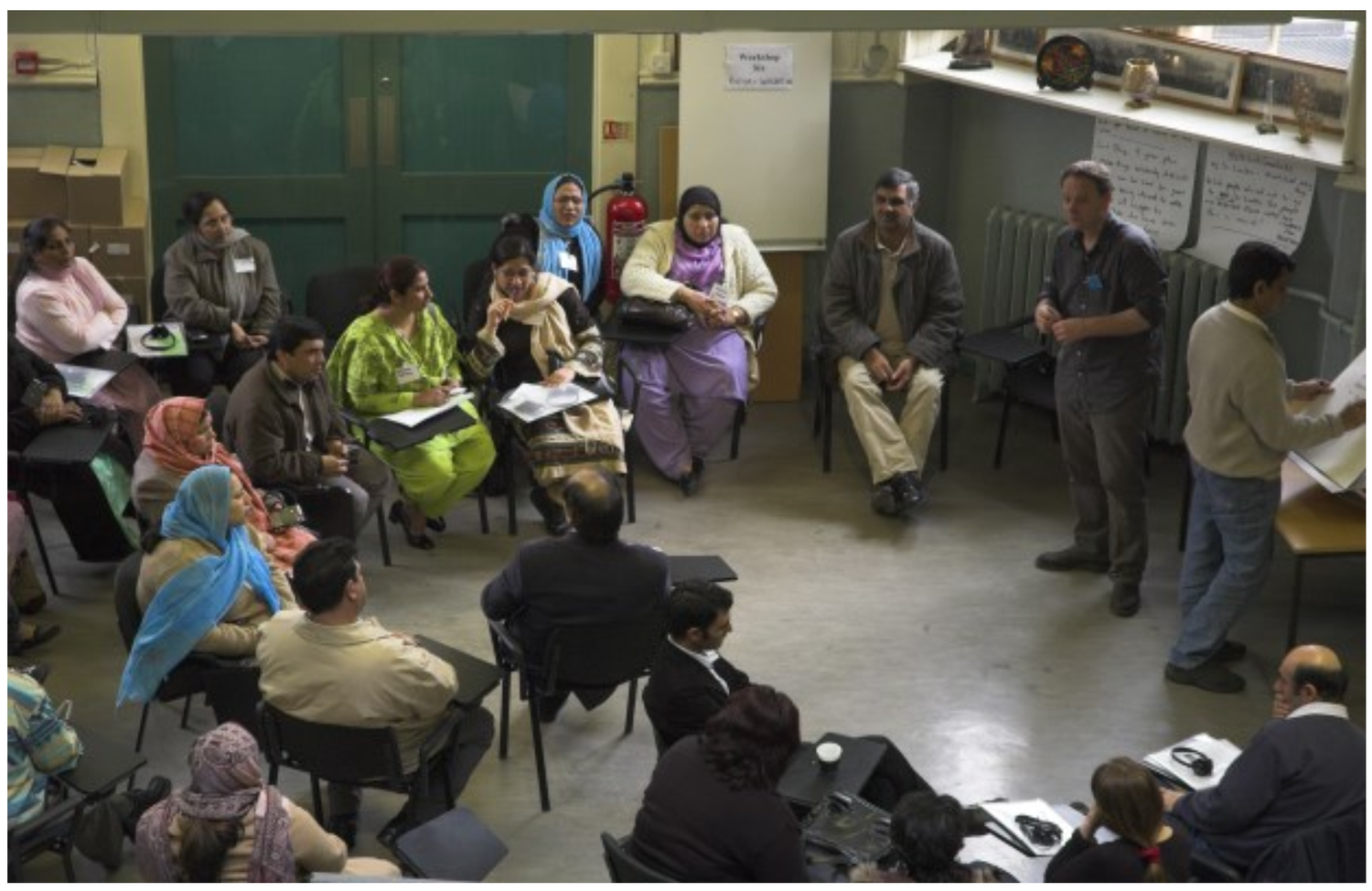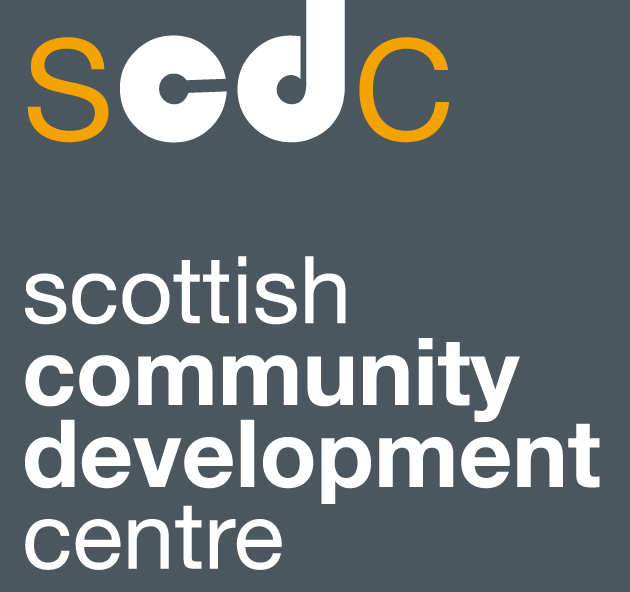An online learning resource for community groups

New Scots Refugee Integration Strategy
Scotland has a long history of welcoming refugees and asylum seekers and recognises it is a human right to be able to seek asylum in another country.
In Scotland, there are hundreds of projects, services, community groups and organisations who do amazing work supporting refugees and asylum seekers and promoting integration in communities. Many of these are refugee community organisations and refugee supporting groups.

Introduction to New Scots
The information provided below can also be found in our presentation at the end of this section.
What does integration mean?
There are a number of definitions of integration, but simply, integration means:
“communities where people, whatever their background, live, work, learn and socialise together, based on shared rights, responsibilities and opportunities” (Home Office Indicators of integration 2019).
Integration is about reducing inequality and making sure that people have equal access to services and opportunities and can live together in communities that are safe and welcoming.
What is the New Scot’s Refugee Integration Strategy?
The New Scots Refugee Integration Strategies have been developed by the Scottish Government, the Convention Of Scottish Local Authorities (COSLA), the Scottish Refugee Council (SRC) and other partner organisations. The latest version of the strategy was published in March 2024.
It aims to support refugees and people seeking asylum in Scotland’s communities. It sets out a vision for a welcoming Scotland where refugees and asylum seekers can rebuild their lives and feel part of Scottish Society from the day they arrive.
Watch this video about the strategy New Scots: building community and hope - Scottish Refugee Council
Unlike the UK Government, the Scottish’s Government’s approach is to support refugees and asylum seekers to integrate into communities from day one.
However, it is the UK government, not the Scottish Government, who is responsible for asylum policy, which is handled by the Home Office in London. The Scottish Government is responsible for refugee access to essential services like healthcare and education and for supporting communities and it is these matters which are covered in the strategy.
Who are the New Scots?
In Scotland, we use the term ‘New Scots’ to include people living here who have been granted refugee status or another form of humanitarian protection, and their dependents; people seeking asylum and people seeking protection as a result of displacement, exploitation or political persecution; as well as those whose application for asylum has been refused, but who remain in Scotland.
What are the principles of the new strategy?
A principle is a rule or belief that you consider when you are doing something and when you turn your ideas into actions.
There are six principles which inform the New Scot’s approach:
Integration from Day One – New Scots should be supported into communities from the first day of arrival and not just once leave to remain has been granted
Rights Based Approach – aims to ensure people to know their rights and to understand how to exercise them and get help to do so.
Restorative and trauma informed - tries to help people repair the harm caused by their experiences of persecution, build and maintain positive relationships with people, and resolve difficulties
Involvement of people with lived experience of forced displacement – people with lived experience should be directly involved in decision making processes regarding refugee integration and assisted to create organisations to represent their views.
Inclusive intercultural communities – it involves dialogue and mutual learning between the many different cultures which make up our society. This can be achieved by ensuring language and cultural learning are well supported supporting stronger resilient communities which enable everyone to participate.
Partnership working and collaboration – co-ordinating the efforts of organisations and community groups across Scotland in supporting refugees and asylum seekers.
So all of the actions that take place as a result of the strategy and of any funding associated with it, should be working towards delivering these principles in practice.
What does the new New Scots Integration Strategy hope to achieve?

There are six main outcomes in the new strategy. Outcomes are the change that you want to see or the difference that you want to make. You can find out more about what we mean by outcomes in Module 4.
The six outcomes in the New Scots strategy are:
1. New Scots live in safe, welcoming communities, where everyone’s human dignity is respected and everyone is able to build diverse relationships and healthy intercultural bonds.
2. New Scots are able to use well coordinated services, which recognise and meet their rights and needs
3. New Scots understand their rights, responsibilities and entitlements in Scotland and use these to live full and independent lives.
4. Everyone living in Scotland understands that integration is something we are all responsible for and respects the positive variety of experience and culture that New Scots bring. New Scots can achieve their ambitions through education, employment, culture and leisure activities in diverse communities.
5. The policies, plans and laws that have an impact on New Scots are shaped through their participation and informed by their rights, needs and aspirations.
6. The principles of the New Scots Refugee Integration Strategy guide all future responses to crises that bring forced migrants to Scotland and seek to ensure all such migrants will be treated equally.
These outcomes place communities at the heart of integration. So, for approaches to integration to succeed, they must be implemented in and with local communities and with community organisations including refugees and asylum seekers.
How does the strategy make these changes happen?
The strategy is implemented by working groups who work on actions connected to themes. These themes are:
Needs of asylum seekers
Employability and welfare rights
Housing
Education
Language
Health and wellbeing
Communities, culture, and social connections
There is also a Core Group which will review progress against the aims of the New Scots Strategy and Delivery Plan. It will ensure progress reports are published during the time the strategy is being implemented.
The core group is supported by a Leadership Board of Scottish Government, COSLA, who represent local Councils, and Scottish Refugee Council. The Leadership Board will link with the Minister for Equalities and other key organisations. It will oversee the direction of the Strategy and make sure partners are committed to work together to help asylum seekers and refugees in Scotland.
How did it make a difference?
It’s important that any new strategy that is developed is based on how well previous strategies have worked. This is why an evaluation was carried out in 2023 to find out what the 2018 - 2022 strategy had achieved.
Most people agreed that the strategy had made refugee integration easier by helping organisations in Scotland to work together. This evaluation has been used to shape the new version of the strategy.
For more information, please see the Evaluation of the New Scots Refugee Integration Strategy 2018-2022 - Key Findings Summary (www.gov.scot)
Or the full evaluation here New Scots Refugee Integration Strategy 2018 to 2022: evaluation - gov.scot (www.gov.scot)
Watch our presentation for a brief introduction to New Scots Refugee Integration Strategy.

What does New Scots mean for your community group?

One of the key principles underlying the strategy is that refugee communities and refugee supporting communities should be involved in both the development and the delivery of the strategy. If you are interested in finding out more, then contact the Communities team at Scottish Refugee Council.
A key theme in the strategy is Communities, culture and social connections. This theme recognises the importance of community groups in supporting people to settle here, particularly new arrivals, and the need for groups to be able to get the support that they need. It also recognises the importance of refugees being able to live in safe welcoming communities and to be able to make social connections and become involved in these communities and form friendships there. And it recognises the need for Scottish communities to have a better understanding of refugees and for Scottish cultural life to reflect the diversity of Scotland, including the many positive things that refugees bring with them.
Social connections are a key part of integration. It can be useful to think about these connections in terms of bonds, bridges and links. Very simply, bonds are connections between people who share a common identity (for example, refugees of a particular nationality, ethnicity or faith), bridges are connections between people who come from different backgrounds (for example, diverse groups of people from different nationalities or groups of refugees and their Scottish neighbours) and links are connections with organisations, including local and national government (for example, connections with services and decision makers).

Group discussion 1

Planning your projects and services, and getting funding for them, may be easier if you can describe how they help your community form bonds, bridges and links. Write down all the services and activities that you do as a group. If you don’t currently run any services or activities, then you could do this for services in your area or services that are important for your community. Then for each activity, discuss:
Are these activities helping to support bonds, bridges or links?
Bonds: Connections between people who share a common identity or interest
Bridges: Connections between people who come from different backgrounds
Links: Connections with organisations and services, including local and national government
Remember, that it’s possible for some to fit into more than one category. This is totally fine, but it is also good to consider whether you would like to do anything around the other categories or to know what other organisations are doing in these areas.
Once you’ve done that, have a short discussion around:
What does this tell you about your services and activities?
Are you helping build - bonds, bridges or links - or a combination of these?
Are there any other things you would like to do to help achieve this?
Now that you have considered how to create and strengthen social bonds, links and bridges, you may want to keep this in mind when you working on templates in other modules, particularly governance (Module 2), engaging with your community (Module 3) and project planning (Module 4).

